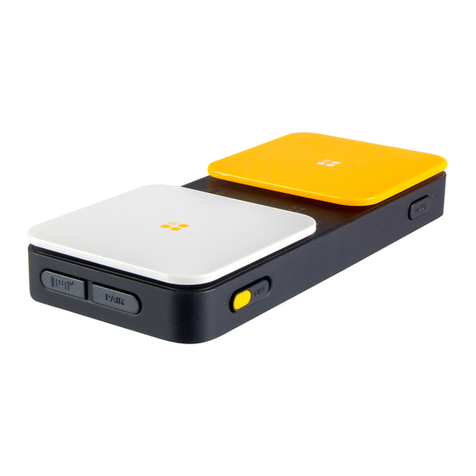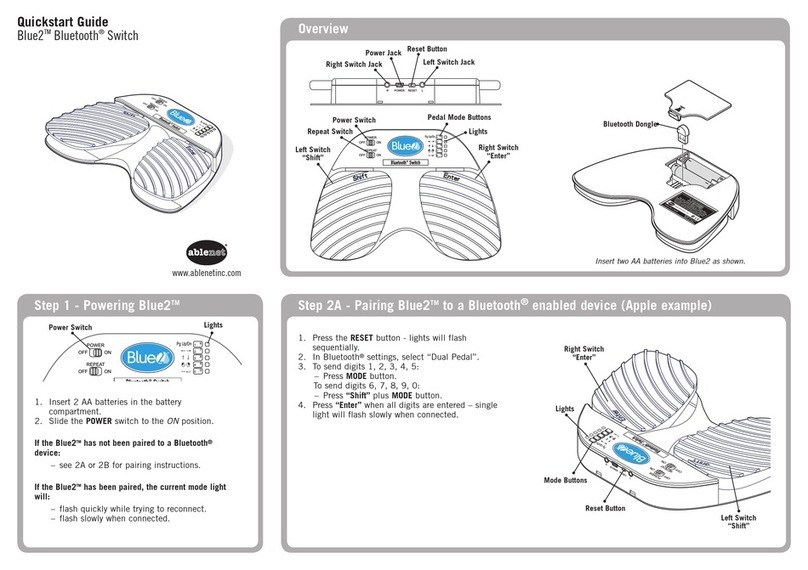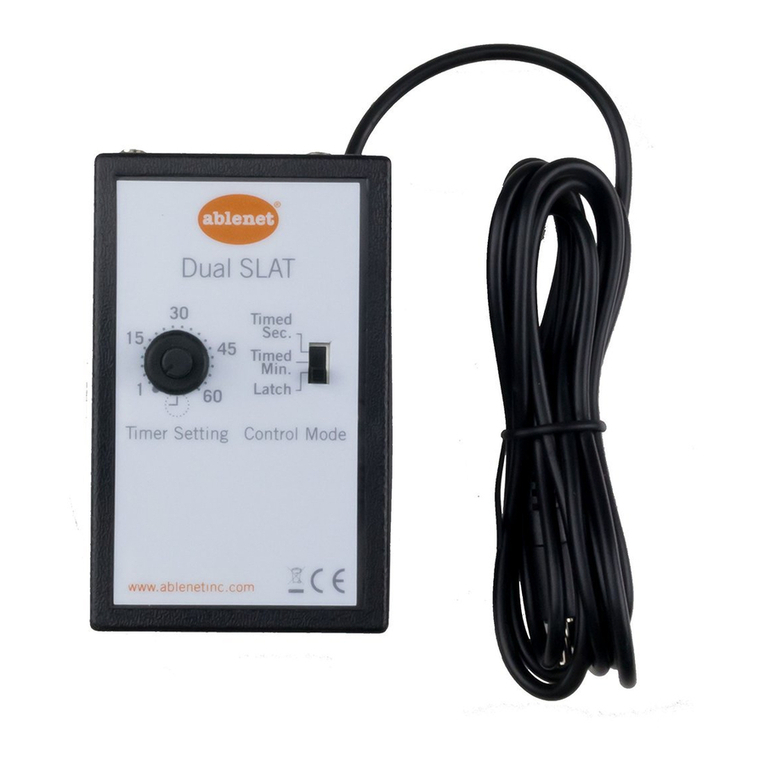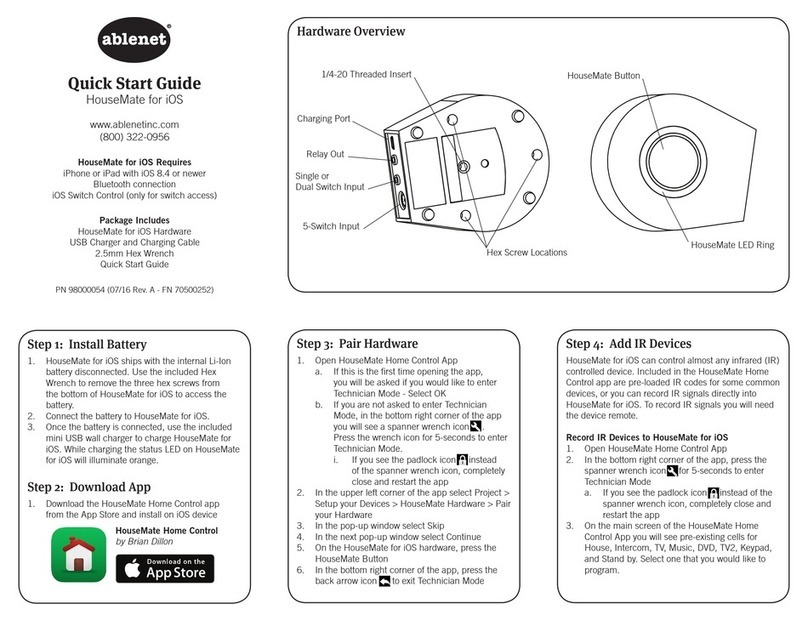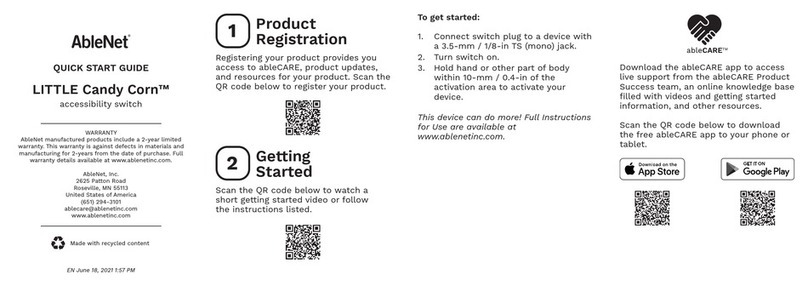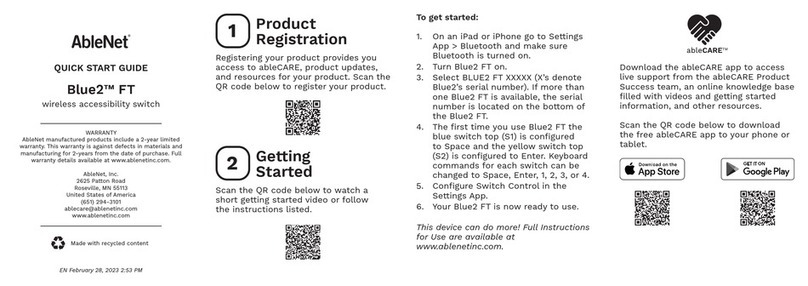
7
Adjusting Activation Distance
The maximum distance allowed for activation (“activation distance”)
can be adjusted from a few centimeters to less than a millimeter. This
adjustment can be made manually or automatically (self-calibration), as
explained below. When the activation distance is reduced to its minimal
value, the switch simulates a zero force touch switch. When activation
distance of, say, four centimeters, is chosen, the switch can be activated
from as far away as four centimeters.
Prior to setting the SCATIR switch to operate a device such as a commu-
nication device, take time for the client to accustom themselves with the
manual or self calibrating mode. Do not plug the relay cable in until they
have mastered the operation of the SCATIR Switch.
Self Calibrating Mode
When the switch is being activated by a body part that cannot always
maintain a constant activation distance from the sensor, the switch can
be operated in self calibrating mode. In this mode, placing the activat-
ing body part at ANY given distance within range of the switch will serve
to define that distance as the activation distance. Once activated at this
distance, the switch may be turned off by moving the body part com-
pletely out of the range of the sensor.
To Set the Self Calibrating Mode
1. Turn the sensor box off.
2. Set the Dip Switches to SW3: Down and SW4: Up
3. Position the sensor.
4. Place the body part in front of the sensor.
5. Turn the sensor box on.
Once activated the switch will be turned on by moving the body part any
where within the range of the sensor.

